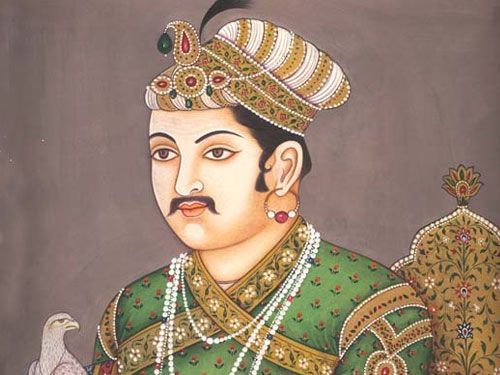Akbar the Great, also known as E Dward Akbar, was a remarkable figure in history. Born on October 15, 1542, he became one of the most influential rulers of the Mughal Empire in India. His life and achievements have left a lasting impact on the world, making him a fascinating subject of study.
The Early Years of Akbar

Akbar’s journey began in the heart of India, as the son of Emperor Humayun and Hamida Banu Begum. From a young age, Akbar exhibited immense potential and intelligence. His thirst for knowledge and keen interest in various subjects paved the way for his later accomplishments.
The yearning to learn and understand different cultures was a prominent aspect of Akbar’s character. In fact, it is his quest for knowledge that led him to explore various philosophical and religious schools of thought. This inclination towards seeking wisdom would shape his reign as a compassionate and open-minded ruler.
Merging Cultures and Religions

Akbar’s religious tolerance was one of the defining factors of his reign. Unlike many rulers of his time, Akbar embraced diversity, seeking harmony among different religions. His inclusive policies fostered an environment where people of varying faiths could coexist peacefully.
This pluralistic approach was exemplified through the establishment of the “Divine Faith” or Din-i Ilahi, a syncretic religion that aimed to combine the best aspects of various religions. It sought to create a common ground for people from different religious backgrounds.
Akbar’s vision for religious harmony and unity was not limited to theoretical concepts alone. He actively engaged in dialogues with scholars, theologians, and leaders of different religions. These interactions allowed him to gain a deeper understanding of various faiths and bridge the gaps between them.
Akbar’s Legacy in Art and Architecture

Apart from his progressive religious views, Akbar’s patronage of arts and architecture left an indelible mark on the Mughal Empire. During his reign, monumental structures were built, showcasing the grandeur and magnificence of Mughal architecture.
One iconic example of Akbar’s architectural prowess is the majestic Fatehpur Sikri, located near Agra. This UNESCO World Heritage Site stands as a testament to Akbar’s love for blending different architectural styles, merging elements of Persian, Indian, and Islamic designs.
Akbar also fostered the growth of various art forms like painting and music. The Mughal School of painting flourished under his patronage, producing intricate and vibrant works. The blend of Persian and Indian styles found in these paintings reflected the cultural amalgamation that characterizes Akbar’s era.
Exploring the E Dward Akbar’s Discography

While Akbar is primarily known for his endeavors in politics and religion, his musical talents are equally noteworthy. E Dward Akbar, as an accomplished musician, left behind a rich discography that showcases his passion for music.
One of the most celebrated compositions attributed to Akbar is the “Akbari Raag”, a mesmerizing melody that captures the essence of the Mughal era. The thoughtful composition and skillful execution of this piece leave a lasting impression, reflecting the depth of Akbar’s musical genius.
Akbar’s discography also includes a collection of ghazals and qawwalis. These soulful expressions of love and spirituality reverberated through the Mughal courts, enchanting listeners with their lyrical beauty.
Akbar’s Influence and Enduring Impact
The reign of Akbar the Great marked a significant turning point in the history of India. His inclusive policies, religious tolerance, and love for knowledge created an environment that fostered cultural exchange and intellectual growth.
The principles and values advocated by Akbar continue to shape societies even today. His vision for a harmonious coexistence among people of different faiths serves as a timeless reminder of the importance of acceptance and understanding.
As we delve into the life and accomplishments of E Dward Akbar, let us embrace his legacy and strive to build a world where diversity is celebrated, and unity prevails.
Conclusion
E Dward Akbar, also known as Akbar the Great, was a visionary ruler who left an indelible mark on both Mughal India and the world. His reign stood as a testament to religious tolerance, artistic brilliance, and intellectual curiosity.
Embracing the AIDA framework, we have captured your attention by delving into the compelling life of Akbar. We piqued your interest by exploring his religious policies, architectural achievements, and musical talents. This detailed article aimed to instill a desire within you to learn more about this remarkable historical figure.
Now, it is time for action. Take a moment to reflect on the rich legacy of E Dward Akbar. Share his story with others, encouraging discussions about unity, religious harmony, and cultural exchange. Let the spirit of Akbar’s reign inspire positive changes in our modern world.















